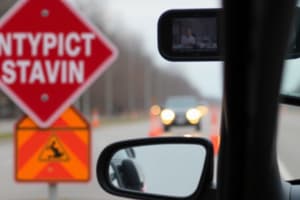Podcast
Questions and Answers
What is the mission and vision of the MN Board of PT?
What is the mission and vision of the MN Board of PT?
To ensure that MN citizens receive quality physical therapy from competent licensees and to protect the public through licensure of qualified physical therapists and physical therapist assistants.
Which of the following are responsibilities of the MN Board of PT? (Select all that apply)
Which of the following are responsibilities of the MN Board of PT? (Select all that apply)
- Licensing (correct)
- Legal Representation
- Complaint Resolution (correct)
- Rulemaking (correct)
What is the ratio of licensed physical therapists to physical therapist assistants in Minnesota?
What is the ratio of licensed physical therapists to physical therapist assistants in Minnesota?
3:1
What are the major functions of the MN Board of PT?
What are the major functions of the MN Board of PT?
What is the purpose of the Physical Therapy Practice Act?
What is the purpose of the Physical Therapy Practice Act?
State laws governing physical therapy practice are uniform across all jurisdictions.
State laws governing physical therapy practice are uniform across all jurisdictions.
Who appoints the board members of the MN Board of PT?
Who appoints the board members of the MN Board of PT?
What is the goal of the Health Professionals Service Program (HPSP)?
What is the goal of the Health Professionals Service Program (HPSP)?
Which of the following are considered ethical practices for physical therapists? (Select all that apply)
Which of the following are considered ethical practices for physical therapists? (Select all that apply)
What are some types of complaints that can lead to disciplinary actions?
What are some types of complaints that can lead to disciplinary actions?
What does a temporary permit in Minnesota require?
What does a temporary permit in Minnesota require?
How many hours of continuing education are required every two years?
How many hours of continuing education are required every two years?
What is the passing score for the National Physical Therapy Exam (NPTE)?
What is the passing score for the National Physical Therapy Exam (NPTE)?
When do licenses expire in Minnesota?
When do licenses expire in Minnesota?
Flashcards are hidden until you start studying
Study Notes
Mission and Vision of MN Board of PT
- Ensures quality physical therapy for citizens of Minnesota.
- Protects public through licensure of qualified physical therapists (PTs) and physical therapist assistants (PTAs).
- Resolves complaints in a timely and impartial manner.
Board Responsibilities
- Responsible for licensing and continued competence (continuing education).
- Handles complaint resolution and participates in legislative rulemaking.
Licensed Physical Therapy Professionals in Minnesota
- Ratio of physical therapists to physical therapist assistants is 3:1.
Major Functions of the Board
- Verifies standards for initial licensure and license renewal for PTs and PTAs.
- Identifies non-compliant PTs and PTAs through complaint processes, enforcing corrective actions or education.
- Provides accurate information and education to the public and licensees.
Physical Therapy Practice Act
- State-specific laws protect the public and guide physical therapy practice.
- Practice Act consists of statutes and rules; serves as the foundation for PT practice in Minnesota.
State Laws Vary
- 53 jurisdictions (including DC, Puerto Rico) have different definitions and scopes of practice.
MN Board of PT
- Acts as a state agency managing practice acts to ensure public protection.
- Board members appointed by the Governor, with licensure required to practice.
MN Chapter of APTA
- A member-driven professional association aimed at advancing the profession of physical therapy.
- Membership and leadership are voluntary.
Federation of State Boards of Physical Therapy
- Develops and administers the National Physical Therapy Exam (NPTE).
- Provides regulatory resources and maintains a comprehensive database for exam and licensure.
Board Members Composition
- Composed of 5 PTs, 2 PTAs, 1 medical doctor, and 3 public members.
Licensee Responsibilities and Attitudes
- Licensees must understand and comply with laws; maintain professional ethics.
- Focus includes confidentiality, informed consent, and professional attitude.
Health Professionals Service Program (HPSP)
- Monitors healthcare professionals to protect public safety when illness affects their ability to practice.
- Encourages early intervention and treatment.
Ethical Practice Guidelines: DO's
- Self-report any disciplinary grounds or convictions within 30 days.
- Complete Continuing Education (CE) hours and cooperate with Board investigations.
Ethical Practice Guidelines: DON'Ts
- Avoid sexual misconduct, disclosing confidential information, and providing care while impaired.
Roles: PT, PTA, PT Aide
- Delegation of responsibilities and tasks from PTs to PTAs and aides, with supervision required.
Referrals
- Accepts a wide range of healthcare professionals for patient referrals.
- Direct access guidelines apply, especially for PTs with less than one year of experience.
Licenses: Denial, Suspension, Revocation
- Various grounds include violation of statutes, impairment, criminal convictions, and unprofessional conduct.
Types of Complaints
- Includes practice without a license, sexual misconduct, substance abuse, and insurance fraud.
Licensure Highlights
- Details requirements for initial licensure, renewal, and changes of address.
Initial License Application
- Process ensures public protection through adherence to specific statutes and rules.
- Involves criminal background checks and prerequisites before testing.
Application Process
- Requires submission of an online or paper application with fees and supporting documents.
Criminal Background Check
- Mandatory for physical therapists; analyzed fingerprints must be clear to avoid rejection.
Knowing the Status of Your Application
- Applicants must monitor their application status after payment processing.
NPTE: National Physical Therapy Exam
- A passing score of 600 is required across all states; limited attempts within specific timelines.
NPTE Exam Registration Process
- Process includes applications to the MN Board, followed by registration with FSBPT and scheduling with Prometric.
NPTE Candidate Handbook
- Contains exam format, content breakdown, and security measures to prevent breaches.
Preparation for NPTE
- Involves skills for stress management, study resources, and practice exams offered by FSBPT.
Temporary Permit
- Allows practice under supervision before obtaining a permanent license; specific application requirements apply.
Licensure Dates
- Applications with affirmative answers or incomplete information require Board review before approval.
Renewals
- Licenses need annual renewal by December 31st, including reporting practice hours and continuing education.
Continuing Education Requirements
- Licensees must complete 20 contact hours every two years, adhering to various category guidelines.
Proposed CE Changes
- New changes eliminate categories, requiring ethics courses and endorsing collaboration in practice for newly licensed PTs.
Website Resources
- Offers application information, statutes, licensee status, and complaint forms for public access.
Key Takeaway on Professional Responsibilities
- Being a PT entails licensing responsibilities, privileges, and ethical considerations critical for safe practice.
Studying That Suits You
Use AI to generate personalized quizzes and flashcards to suit your learning preferences.




